“The one thing you learn about living in South Florida is it’s hot as hell,” said Germane Barnes. “And if you stand in the sun, it’s even hotter.”
On a Friday morning in December, the Chicago-born architect was standing on an outdoor terrace at Miami Dade College’s downtown campus, speaking at a celebratory event for Ukhamba, a temporary pavilion designed by Barnes and completed last month. Timed to the busiest week in Miami’s cultural calendar—with Art Basel and Design Miami in full swing across Biscayne Bay—the festive get-together featured stilt-walkers, live music from a Junkanoo band, and Cuba Libre-swilling guests milling around in the not-actually-very-hot December sun: the weather was ideal for everyone, except perhaps for Barnes himself, whose pavilion (sponsored, along with the party, by the Museum of Art and Design) was intended as a shade structure for students and passersby. With its timber- and steel-hewn envelope inspired by traditional African basket weaving techniques, Ukhamba will be onsite until February, giving it plenty of hot days to prove its stuff. “It’s a breeze block, like you see in the Caribbean,” Barnes explained. “A place for rest, respite.”
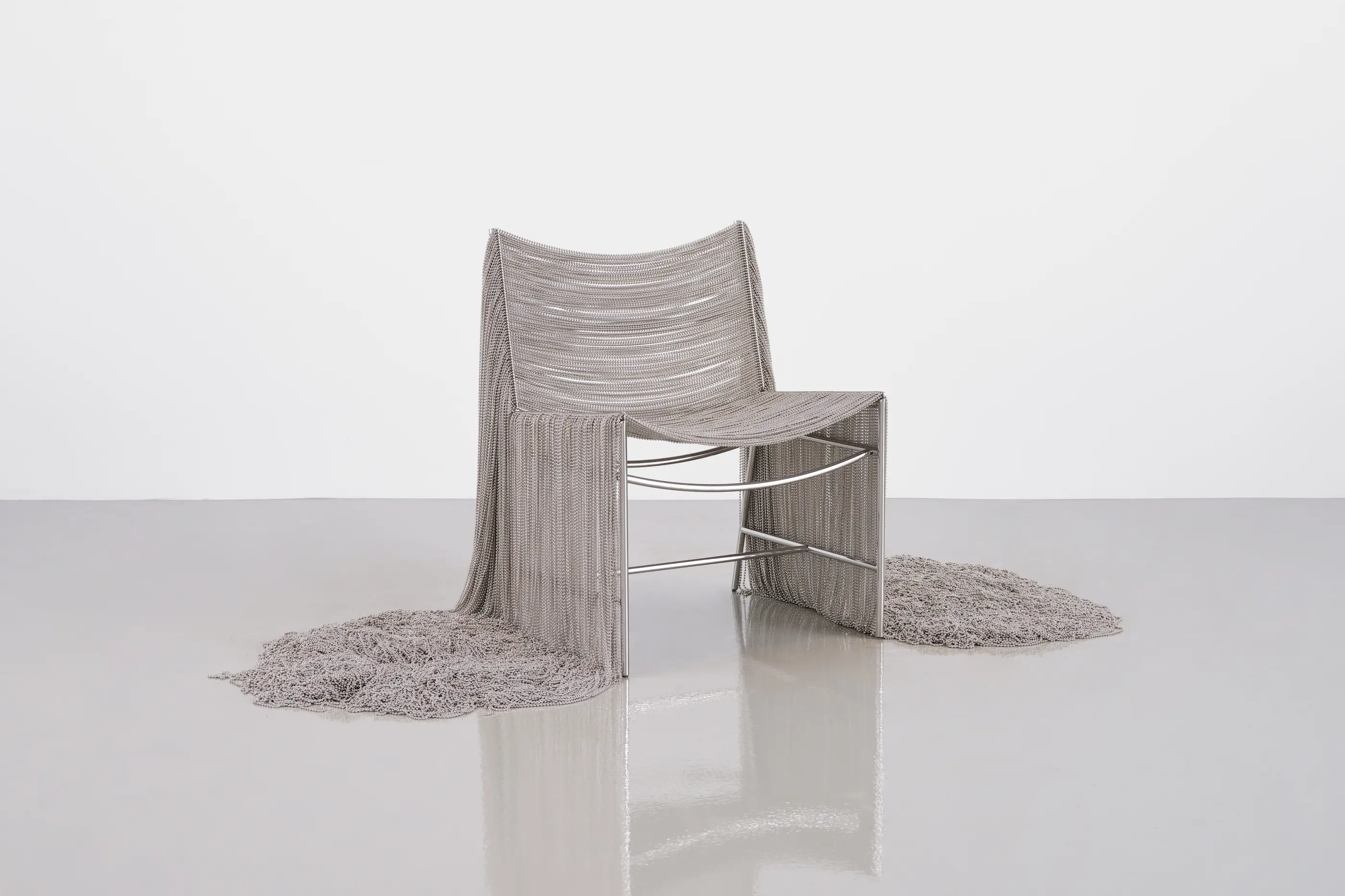
1
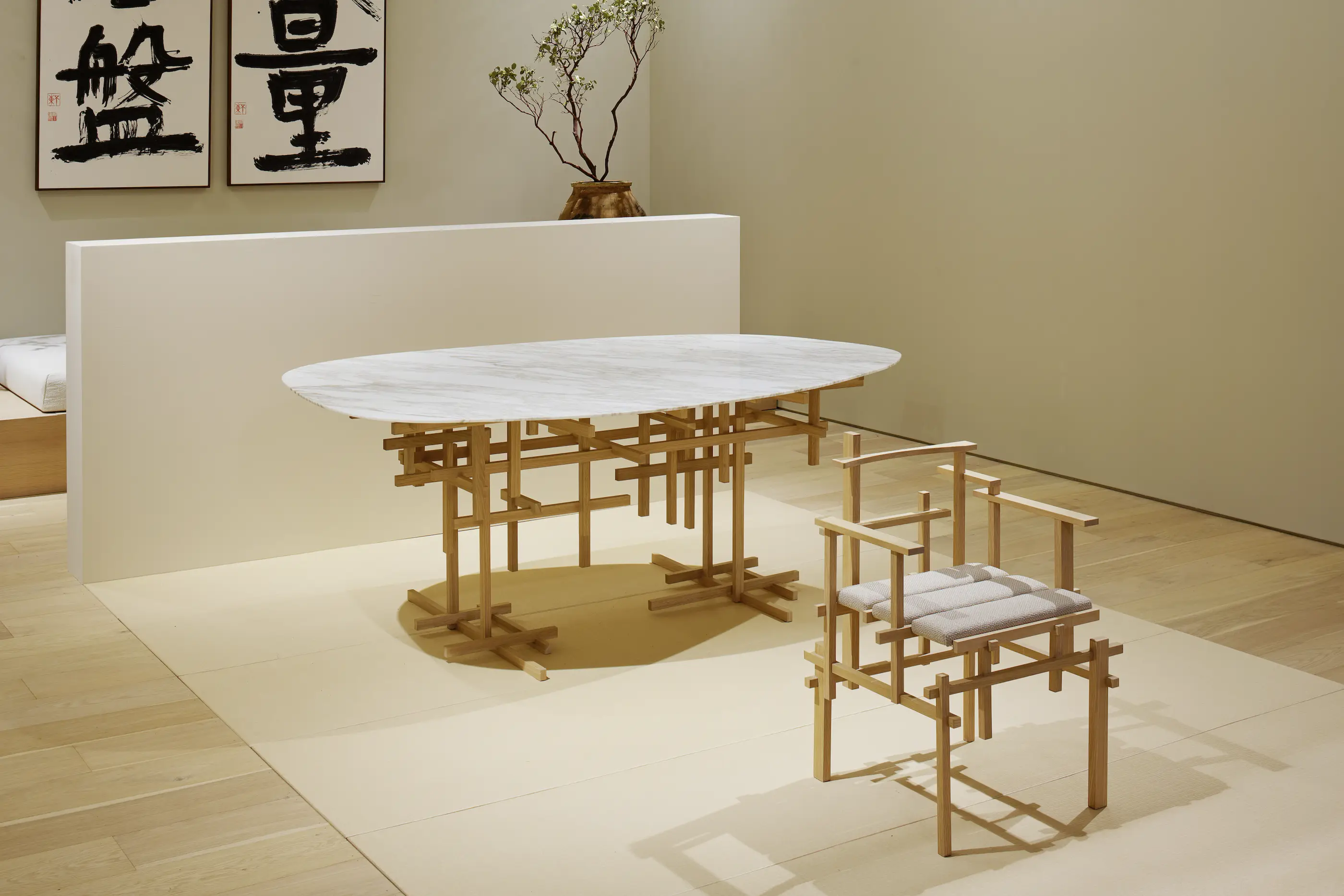
2
Creek Chair by Frida Escobedo for Friedman Benda (1); Furnishings by Kengo Kuma for Aman Interiors (2). Photos courtesy of Friedman Benda and Frida Escobedo; photography by Timothy Doyon (1); courtesy James Harris for Design Miami (2)
After a long five days in the city, rest and respite were welcome in whatever shape they happened to come, as indeed was architecture. From Coral Gables to Little River, there were a fair smattering of architects and architecture-adjacent doings—although not so much, it seemed, as in years past. At the Design Miami fair itself, only a few architect-designed product launches were in evidence: at the Friedman Benda booth, Frida Escobedo’s chain-beswagged Creek Chair made its first-ever appearance at Miami, though a version had previously been unveiled in New York. A few steps away, Japan’s Kengo Kuma premiered dining chairs and tables formed out of his signature stick-like accretions, though most are destined exclusively for a new residential project from luxury hospitality brand Aman.
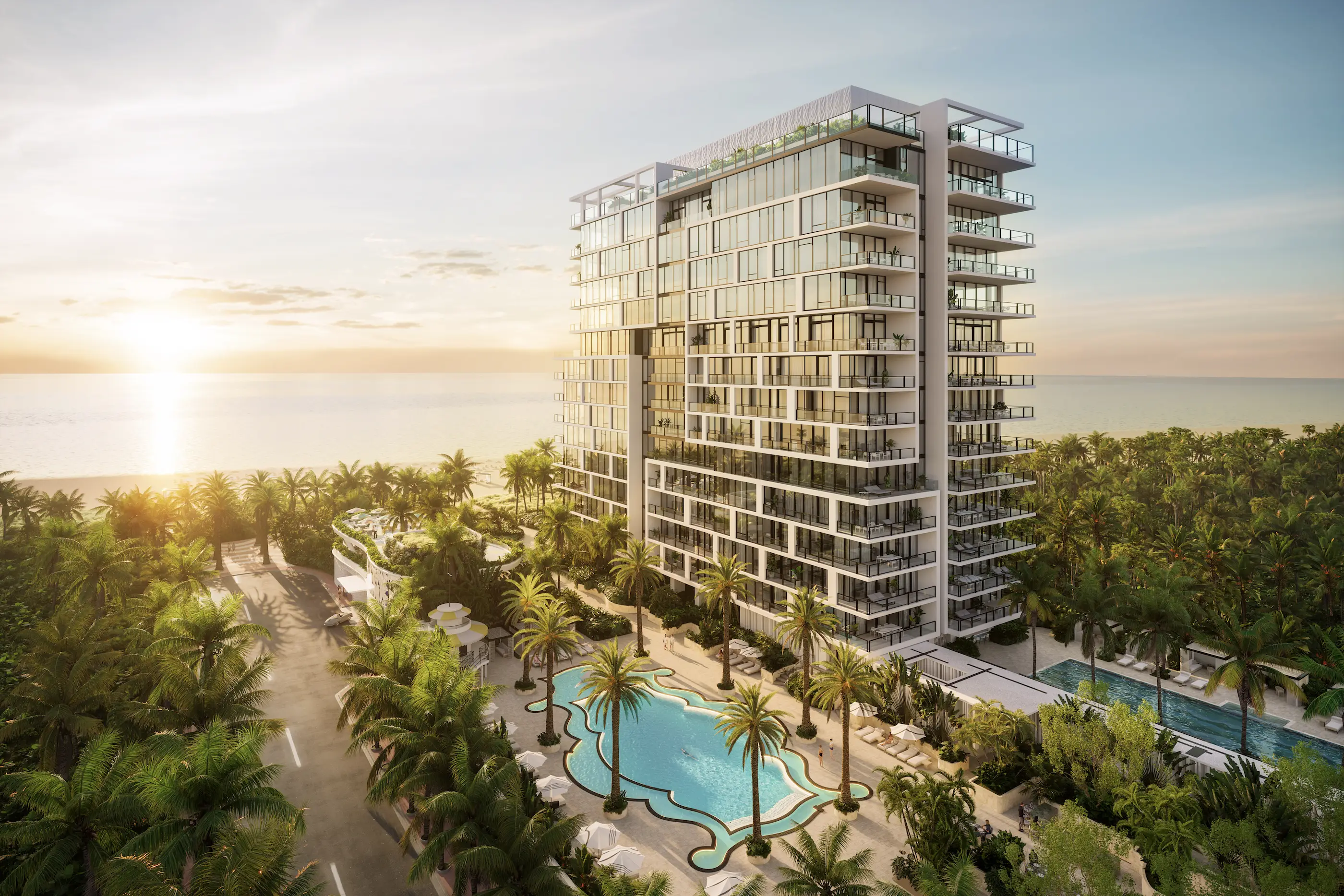
Rendering of revamped Raleigh Hotel in Miami Beach, looking east. Image courtesy SHVO, Lipman Studio, The Boundary
There were new buildings, too—albeit the biggest ones were not nearly finished. “I knew we had to go with Peter for this,” said mega-developer Michael Shvo. At a showroom behind the historic, currently defunct Raleigh Hotel, he was explaining his choice of architect Peter Marino to help revive the property and expand it with a new black-clad residential tower that will be “closer to the water than basically any other building in Miami Beach,” as he noted. Showing off a large-scale model of Marino’s scheme, with its elaborate landscaping and connecting portico structure, Shvo all but leapt with enthusiasm; unfortunately, the developer will have to sustain that energy for some time yet, since the multi-part project is not expected to be complete until 2026 (or possibly later).
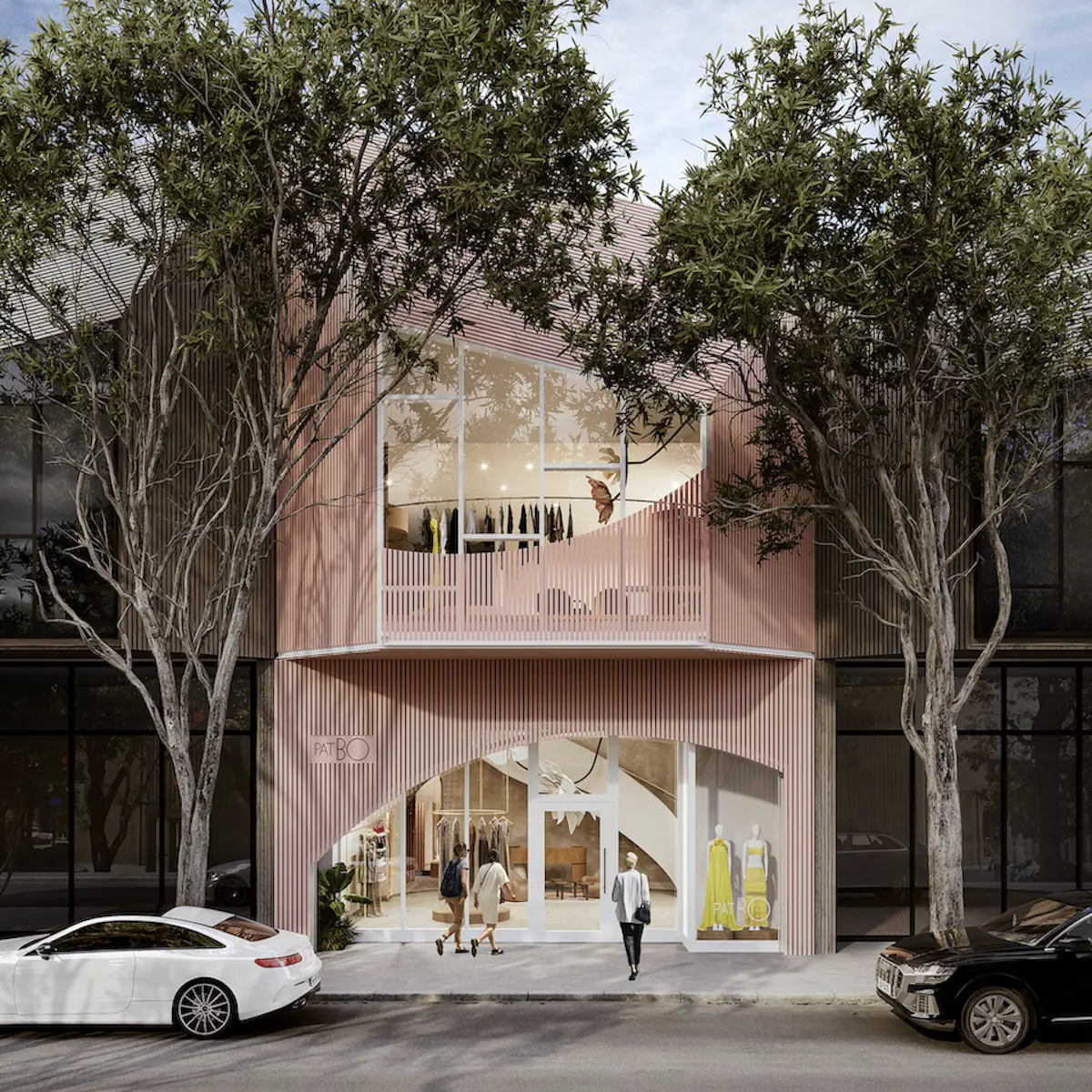
Rendering of fashion brand PatBO's new Miami flagship, designed by BoND. Image courtesy BoND.
Another still far-off project was teased by local developer Craig Robins, who announced that Pritzker Prize winner David Chipperfield would be creating a building in the Design District, Robin’s personal architectural playground on the mainland (itself the site of a couple of project debuts last week, including New York–based architecture and interior design studio BoND’s new space for Brazilian clothier PatBO). In something of a last-minute addition to the Design Miami talk series, Chipperfield arrived to discuss his career and the state of architecture with critic Paul Goldberger. Fielding a request for career advice from a young design student in the audience, the British eminence replied with a helpful sort of non-answer: “I think ignorance can be quite useful,” said Chipperfield. “If you knew what was going to happen, you might not get out of bed in the morning.”
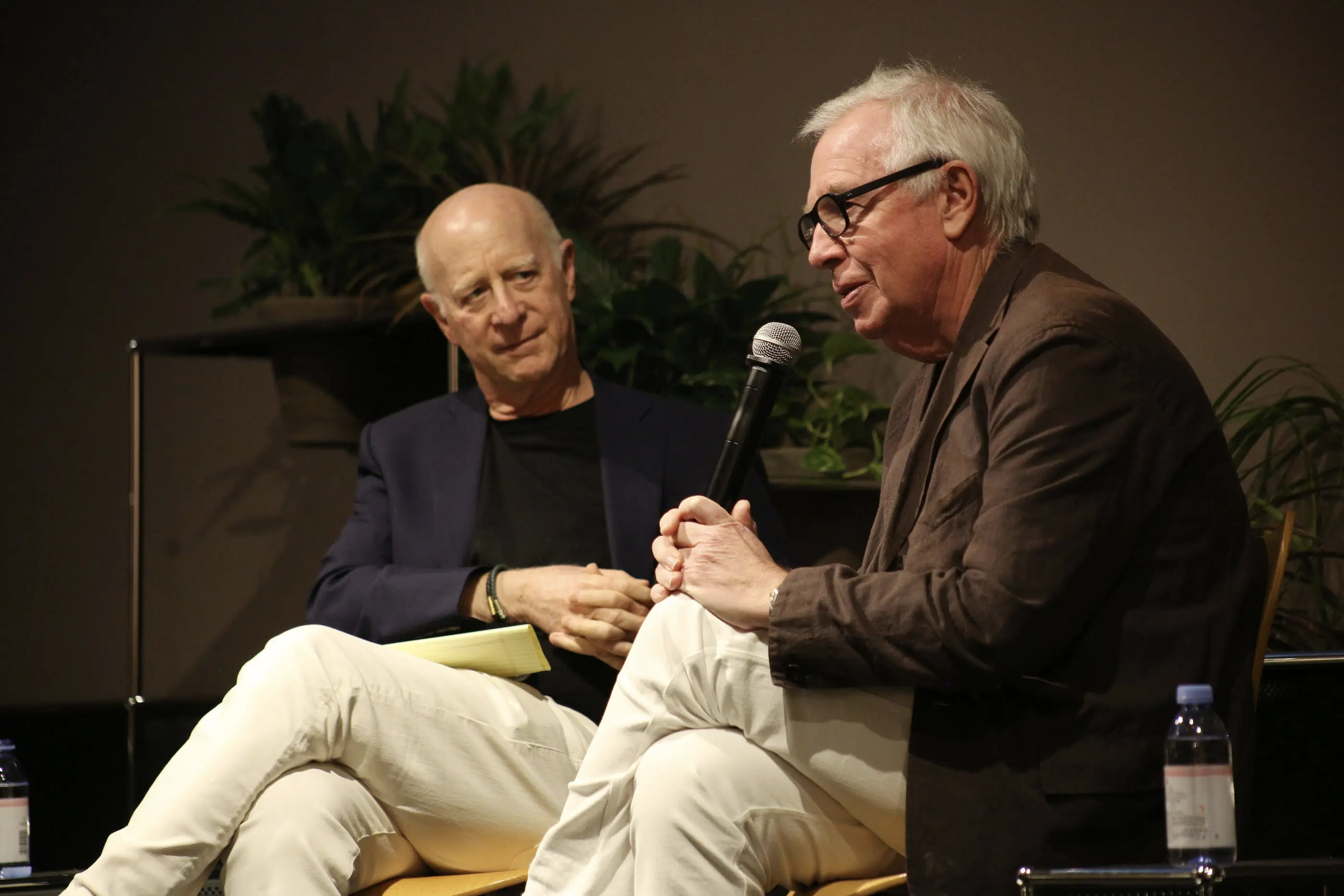
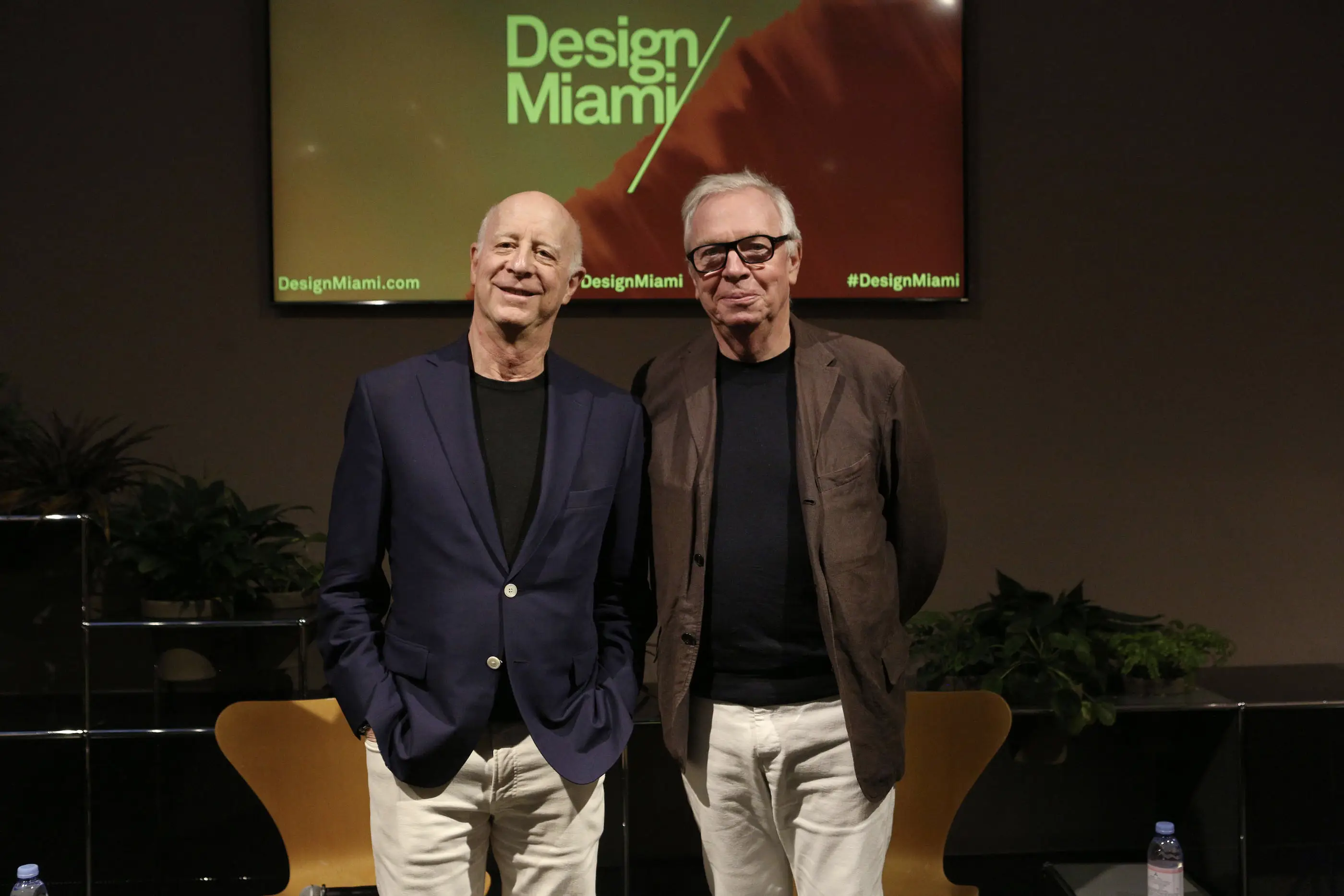
Paul Goldberger and David Chipperfield participated in a Design Miami talk. Photos © World Red Eye
Otherwise, architects were more seen than heard around the fairs. Frank Gehry designed a bag for Louis Vuitton, prominently displayed near the VIP entrance to Art Basel. Emanuel Christ, of Swiss firm Christ & Gantenbein, joined an offsite panel with prominent American museum administrators, to whom (wisely, no doubt) he elected to cede most of the airtime. And Morris Lapidus, the city’s late great hotel designer, was the subject of a small exhibition at the Ritz Carlton South Beach, interesting enough but very small and only recommendable to those who can wait an hour while the concierge retrieves the key. Even multiple sightings around town of Sir David Adjaye—who had all but disappeared from the professional scene following revelations in July of alleged gross misconduct—elicited little more than a disapproving murmur from fairgoers, seeming a bit like a non-event. That was architecture around Miami this year: a lot of light, only some heat.




